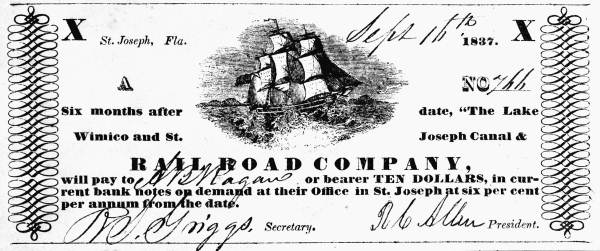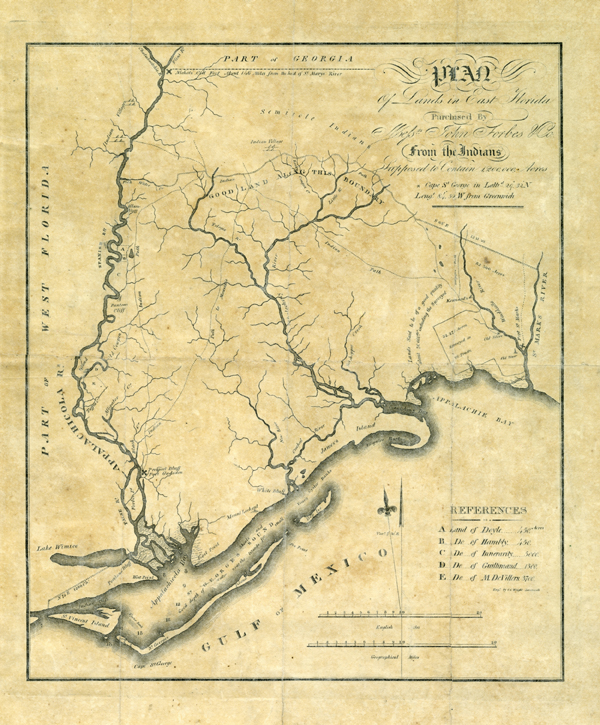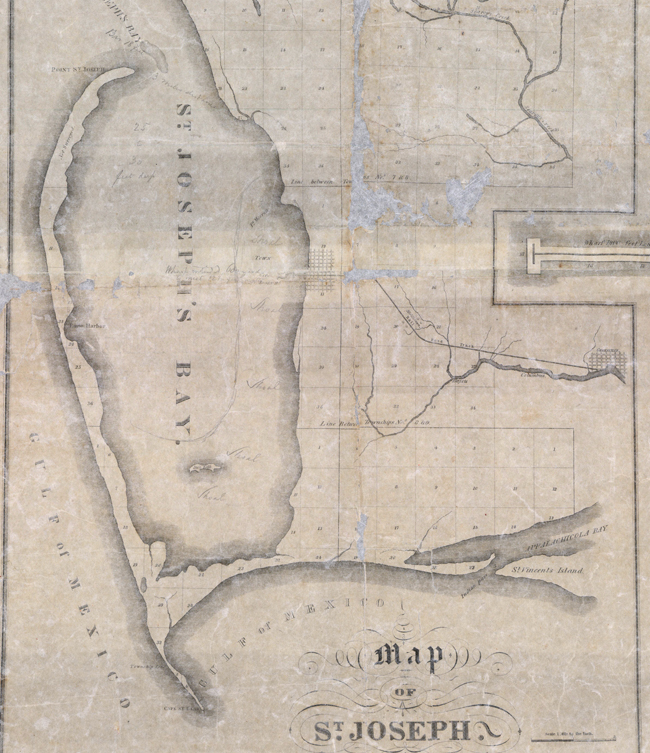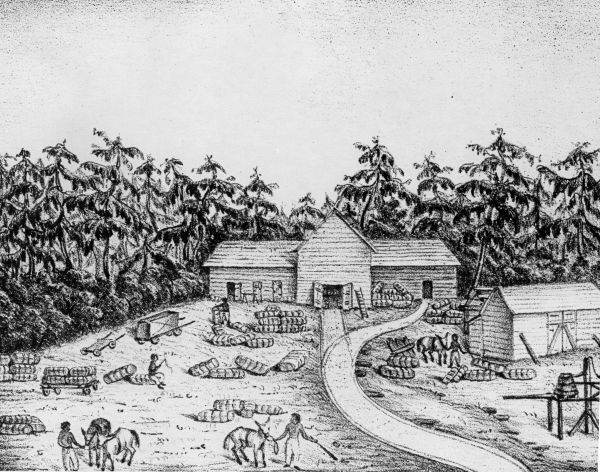Description of previous item
Description of next item
Florida's First Steam-Powered Railway
Published September 9, 2015 by Florida Memory
On September 5, 1836, the Lake Wimico & St. Joseph Railroad ran its first train from the Apalachicola River to St. Joseph. It took about 25 minutes to move the eight cars and 300 passengers along the eight-mile stretch of track. An enthusiastic crowd met the train at its destination, delighted in both the local and statewide implications of this short voyage. In addition to boosting the local economy, the Lake Wimico & St. Joseph Railroad had the honor of being the first steam-powered railroad to operate in Florida.

Replica of the first steam engine in Florida, built by the Baldwin Locomotive Works in Philadelphia and used on the Lake Wimico & St. Joseph Railroad (photo circa 1950s).
There’s an interesting backstory to how Florida’s first steam-powered railroad ended up in the St. Joseph area instead of near St. Augustine, Pensacola, or Tallahassee. It goes back to 1835, when most of St. Joseph’s citizens were still living at the nearby port town of Apalachicola. That year, the Supreme Court ruled in a lengthy dispute over a land deal between the local Creek and Seminole Indians and a trading house called Panton, Leslie & Company. To make a very long story short, this company had convinced the natives in 1804 to sign over title to over a million acres of land between the Apalachicola and Wakulla rivers to settle some debts. The Spanish had endorsed the exchange, but when the U.S. acquired Florida in 1821 authorities were less certain about it. The case made its way through the courts, and in 1835 the U.S. Supreme Court ruled in favor of the trading company, granting it title to about 1.2 million acres of land, including the town of Apalachicola.
This posed a bit of a problem for the residents of Apalachicola, many of whom had taken up residence without actually owning their land. Now the title to this potentially critical seaport rested with the successors of Panton, Leslie & Company, reorganized as the Apalachicola Land Company. The company offered to let the residents buy their property to obtain clear title, but the prices were so high the townspeople started looking for alternatives.
That’s where St. Joseph comes in. St. Joseph’s Bay was located about 28 miles to Apalachicola’s northwest, well outside the territory of the Apalachicola Land Company. It was close enough to the river, however, that the townspeople believed they could build a new port at St. Joseph and still have all the trading advantages of Apalachicola. They would simply connect the new town to the Apalachicola River using a canal. St. Joseph would prosper, and Apalachicola would fade.
A company had already been chartered by the Legislature to build a canal between St. Joseph’s Bay and the river even before the Apalachicola Land Company had won its case, but now things got serious. Engineers began checking the water depths in the bay and in Lake Wimico, while surveyors began laying out the new town of St. Joseph.
At some point, canal company officials decided to change modes of transportation. In November 1835, the Pensacola Gazette reported that 100 carpenters and 200 laborers were already at work on a new railroad, which would replace part of the intended route of the St. Joseph – Lake Wimico canal. The company began this work without official authority from the Legislature, although its charter would eventually be amended in January 1836. The exact date of the railroad’s completion is unknown, but by March 1836 the route was finished as far as Bayou Columbus. The first trains were likely drawn by mules or horses, but by September two steam engines from the Baldwin Locomotive Works in Philadelphia had arrived. The way was clear for the Lake Wimico & St. Joseph Railroad to begin operations as Florida’s first steam-powered railroad.

Promissory note from the Lake Wimico and St. Joseph Canal & Railroad Company for ten dollars (1837).
We should note, of course, that there was at least one other railroad operating in Florida at the time, although not powered by steam. The railway connecting Tallahassee with the port at St. Marks was completed either in 1836 or 1837, but the condition of the road was so poor that steam locomotives could not be run over the tracks. Instead, horses or mules pulled the cars. This railroad does have the honor of resulting from the first railroad charter in Florida, given to the Leon Railway Company in 1831.
St. Joseph’s new railroad was a success, but the town’s dreams of becoming a major port were to be short-lived. A yellow fever epidemic in 1841 killed many residents and drove most of the others away permanently. The railroad, which had suffered from financial troubles stemming from the nationwide economic downturn of the late 1830s, was auctioned off to a railroad contractor in Georgia. As St. Joseph began to disintegrate, a number of its buildings were dismantled and, ironically, rebuilt in Apalachicola. Meanwhile, a September 1841 hurricane finished off what was left of the fledgling port.
Are you a railroad history enthusiast? What are some of your favorite stories from Florida railways of the past? Share this post on Facebook or Twitter and add your own story!
Cite This Article
Chicago Manual of Style
(17th Edition)Florida Memory. "Florida's First Steam-Powered Railway." Floridiana, 2015. https://www.floridamemory.com/items/show/297533.
MLA
(9th Edition)Florida Memory. "Florida's First Steam-Powered Railway." Floridiana, 2015, https://www.floridamemory.com/items/show/297533. Accessed February 26, 2025.
APA
(7th Edition)Florida Memory. (2015, September 9). Florida's First Steam-Powered Railway. Floridiana. Retrieved from https://www.floridamemory.com/items/show/297533

 Listen: The Blues Program
Listen: The Blues Program

